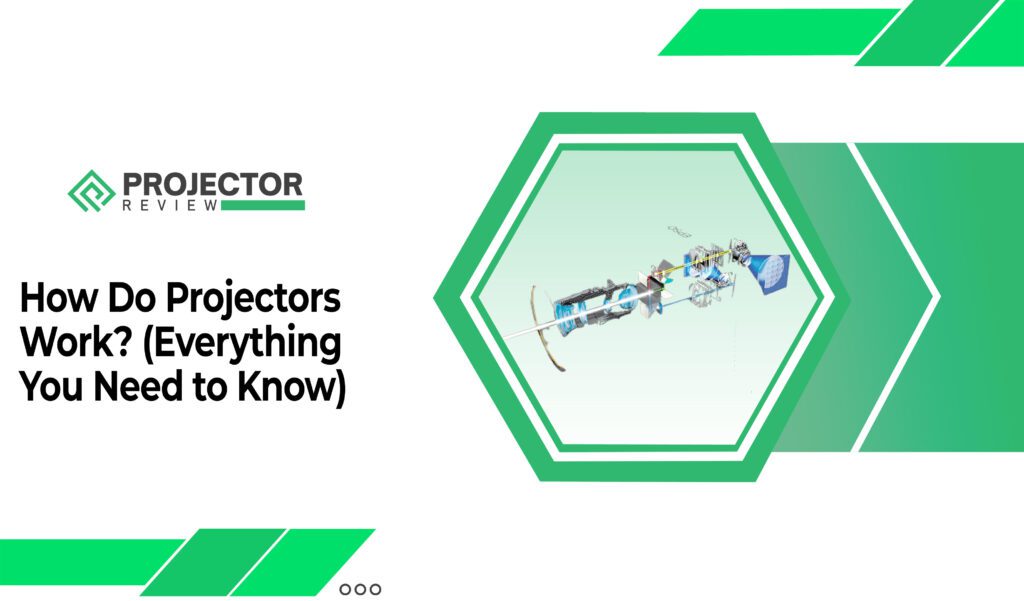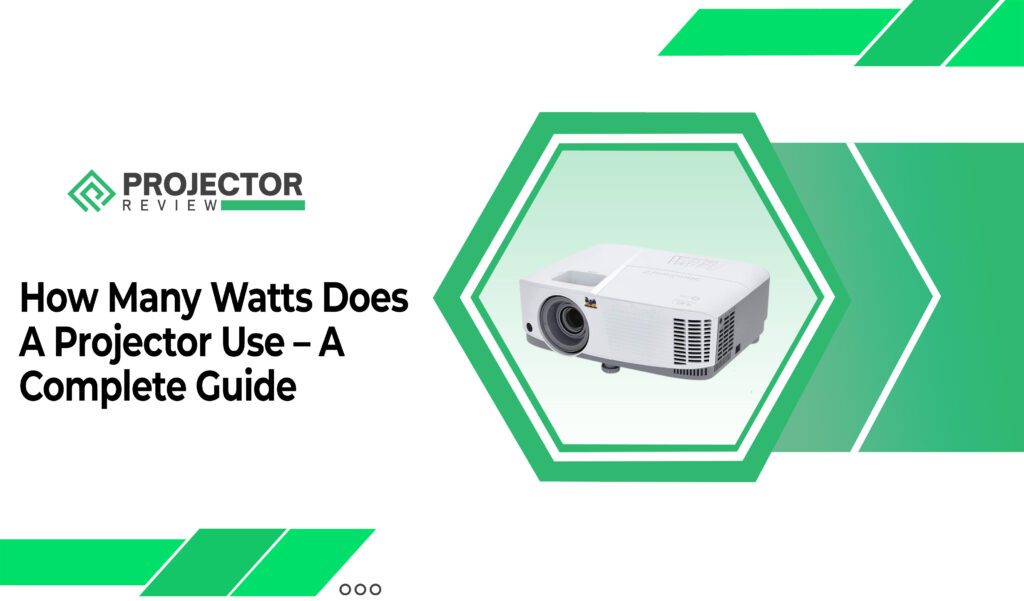The material of the projection screen can affect the way your image appears. Different surfaces contain different reflective properties. Some are cheap and some are high quality. Screen materials contain various textures and are even available in different colors.
Many projector screens are made of vinyl, high-quality plastic, rubber, spandex, and polyester fabric. You can also find some made of PVC, tarpaulin, and fiberglass. The best projector screens are made of vinyl or elastane.
The type of screen material selected can have a major impact on the overall appearance of the projected image. Regardless of whether a projection screen is purchased ready-to-use or made from purchased materials, consider the cost, availability, and performance of the various options when matched with the size, power, and type of projection method to be used.
There are many types of projection screens, including those that can be painted, textile-backed, or stretched canvas.
Outdoor movie nights depend mostly on on-screen quality. So you need to focus to find the screen type that works for you and gives you the best viewing experience. Your choice will likely depend on your budget screen size and whatever you want.
When you’re ready to build the best projector screen for your block! So this article is for you because it all starts with projector screen materials that guide you to find the best screen material for your projector.
Are Our Projector Screens Worth it?
Yes, projector screens are worth it because you have more control than a bare wall. While a perfectly smooth wall is ideal, even the smallest flaw can affect the projected image.
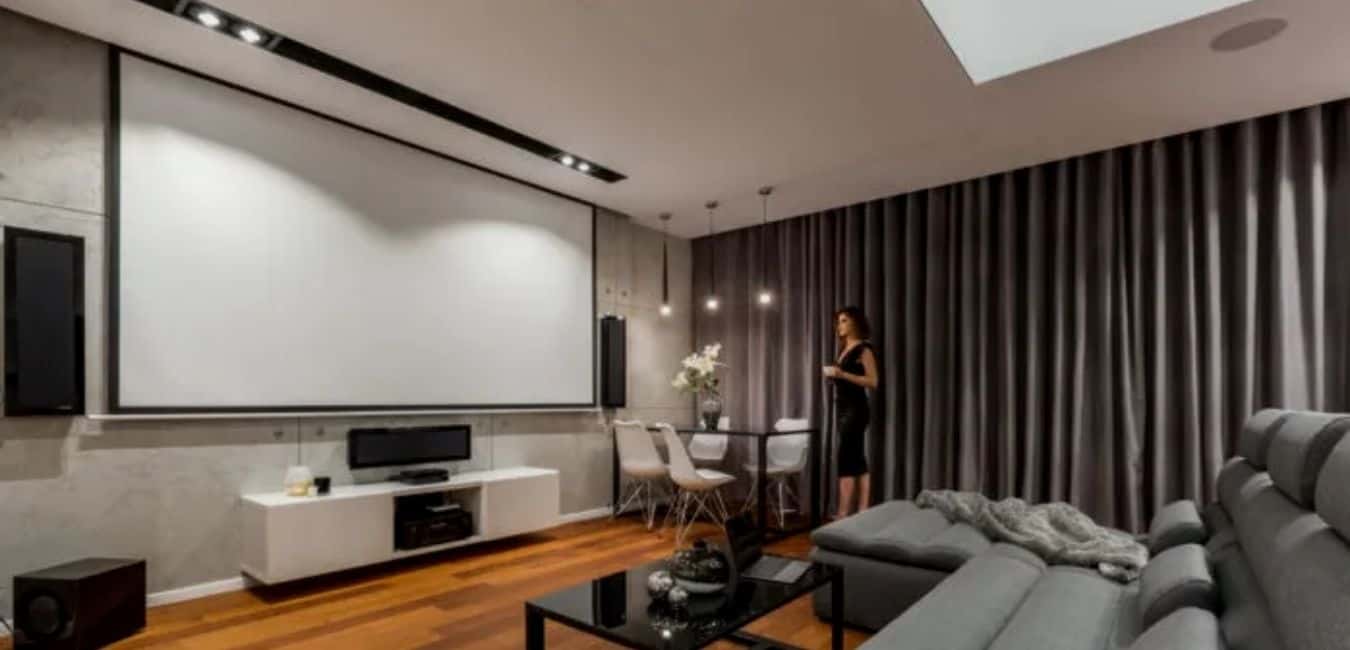

Well, you could just point your projector at the wall, and as long as it’s flat, smooth, and matte white, this approach can be surprisingly effective. Then all you need is a white wall at night.
However, anyone who has bought and permanently installed a more expensive projector should definitely invest in a screen. This immediately leads to improved geometry, more perceived details, and better contrast performance.
Does Projector Screen Make a Difference?
Yes, the Projector screen makes a difference. The biggest advantage of buying a projector screen is that you have more control than with a bare wall. A perfectly smooth wall is great, but minor blemishes can damage the projected image. The color of your wall will be the biggest factor.
A projector screen contains a special coating that improves its reflection properties. A typical wall does not have this special coating. As a result, an image projected onto the wall is not as bright as it would be on a screen. In general, the wall must also be completely white.
Best Materials for Projector Screen
When choosing the right material for your outdoor screen, you need to be very careful about choosing the one that is right for you. With that in mind, this is where we review all of the best outdoor display materials which help you to find the best one for you.
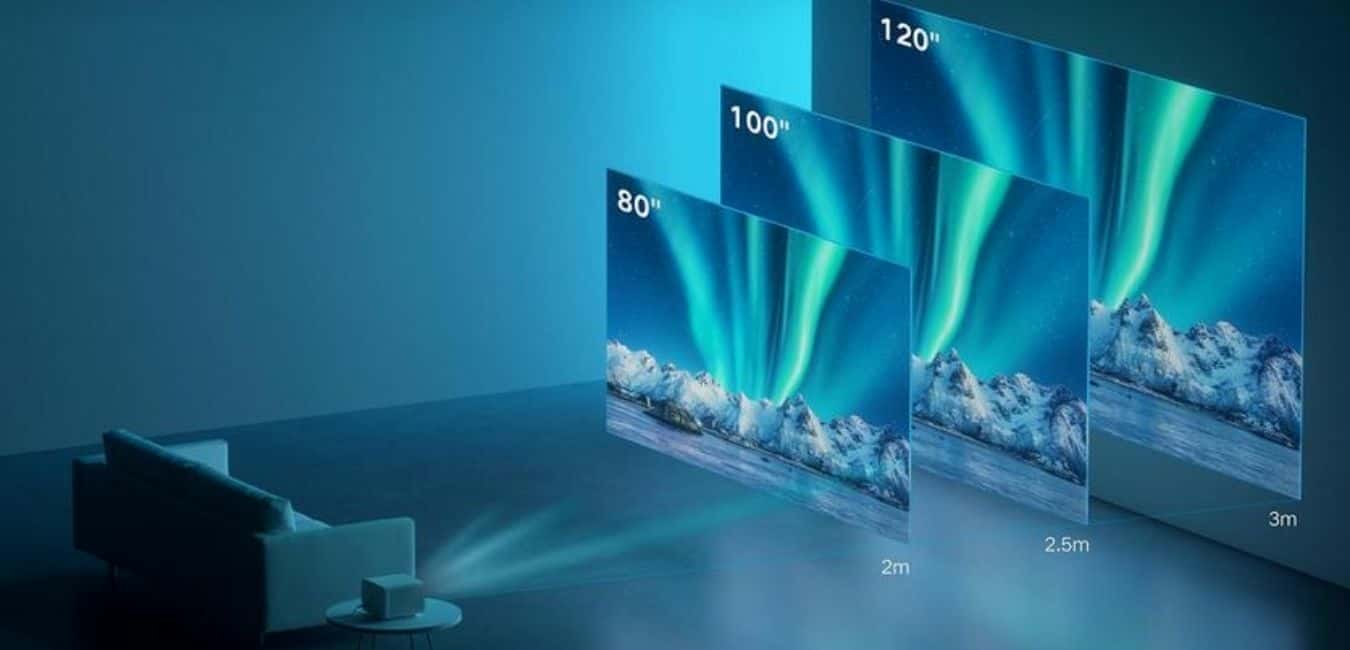

Paint
Paint is one of the best options if you are on a budget and want something quick and simple. Of course, you will need a free wall big enough for the display and the right color. But still, this is the cheapest and easiest solution.
The surface where you should have your own screen is with many uncomfortable stains and deflection elements while watching something on the screen so you have to find an even surface or make it even before painting a screen on it.
Outdoor Fabrics
Outdoor fabrics are another material that works well and won’t hurt your budget. It’s tough, it lasts for a long time, and you will get plenty of it to use. It was not designed specifically for projection screens, but it is a good option for many reasons.
A type of fabric called Tyvek is another great option because it is durable, inexpensive, and easily available. Both materials are easy to move, and do not absorb water, which makes them perfect for outdoor conditions and very popular as an option for outdoor cinema screens.
There are white materials, but you should stay away from completely white and opt for a slightly tinted variant in order to be able to enjoy the colors to the fullest. Outdoor fabrics work well when hanging over something as stretching can lead to wrinkles, which degrades image quality.
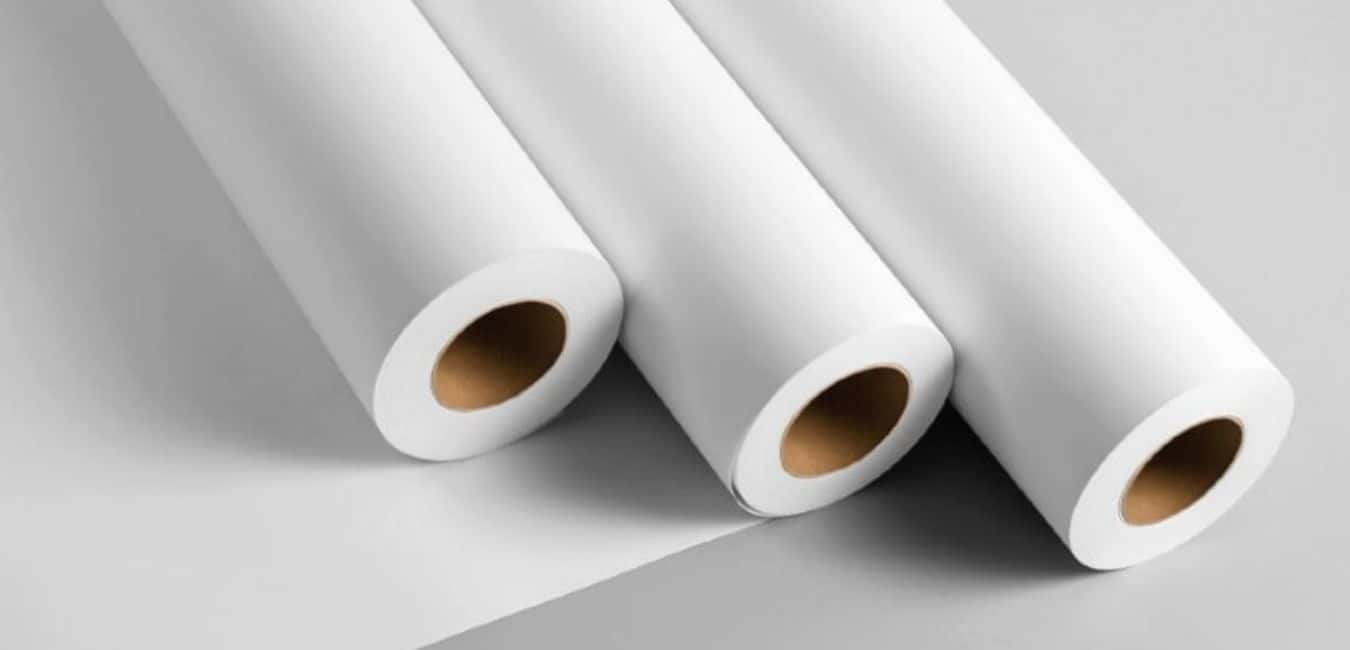

Trapezoid
If you want something more expensive and stylish, the Trapeze is your best option. This smooth material is perfect for outdoor movie theaters, but it comes at a higher price. It’s hard to find something that can be that good.
The picture quality on the Keystone is excellent and you get an excellent viewing experience other than that of other conditions. It’s durable, strong, and will look amazing in any garden.
Spandex
Spandex is another more elegant option, but it contains a lot of potential. The material itself would be an interesting option, albeit a good one. This stretchy material is easy to attach and remove, making it a portable option. It’s also very easy to use, durable, and with minimal likelihood of the image suffering from a kink or something similar.
You need frames and strong though, as spandex is stretchy and you need something sturdy to hold it in place. You may also need help getting set up. However, it’s a good option.
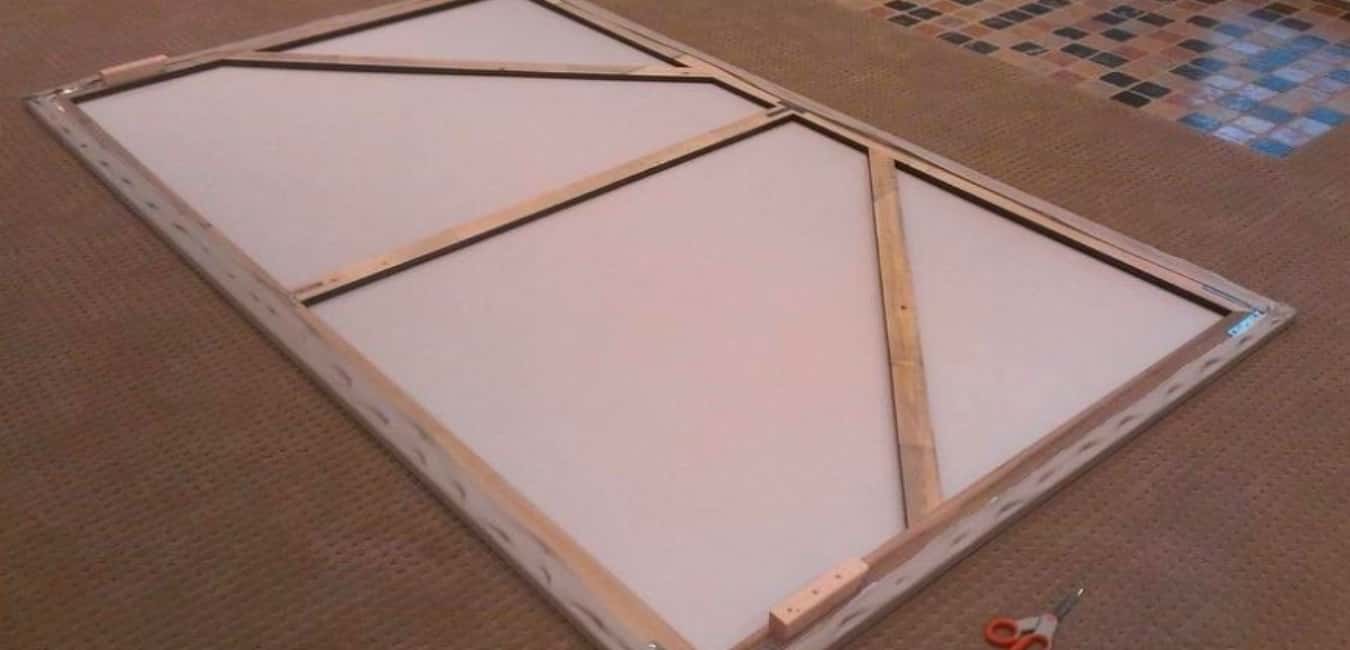

Tarps
Tarps are sometimes used for billboards, but they are also excellent movie screen material that can provide a good viewing experience. The material itself is vinyl but you don’t have to worry about the gloss factor as it doesn’t reflect much. Works well for large backyards. Tarpaulins are generally inexpensive and you can find them in a variety of sizes to suit your garden.
Blackout Cloth
Blackout fabric is probably one of the best materials for outdoor displays, although it’s most commonly used for indoor movie theaters. Even so, it looks a lot like the stuff in real movie theaters, so it’s a good choice. It’s flat, durable, and shows the movie really well.
What Color Projector Screen is Best?
Projector Screen offers suitable colored screen materials which depend on the projector type used, the wall color, the light environment in the room, and your own desire.
In general, projector screen colors come in 4 different colors, namely: White, Silver, Gray, and Black projector screens. Now discuss each of them:
Silver Projector Screen
Therefore, today silver screens are best suited because they produce images as strongly as they can, mostly to have better and more detailed depth from black and white images. You can adjust up to 10 gains from the projector to maximize the brightness of the movie or image.
Silver screens are still present today, but as compared to other projector screens these screens are much more expensive. If you require the 60s movie theme and have the cash then you should have to buy these screens.
White Screen
White always gives the exact colors and brightest light we require when we are alone watching a particular film, TV show, or presentation.
The shade fabric can be matt or standard. But on white screens, if you use PVC or vinyl stretch material it makes the lighting effect that mixes and merges with the light.
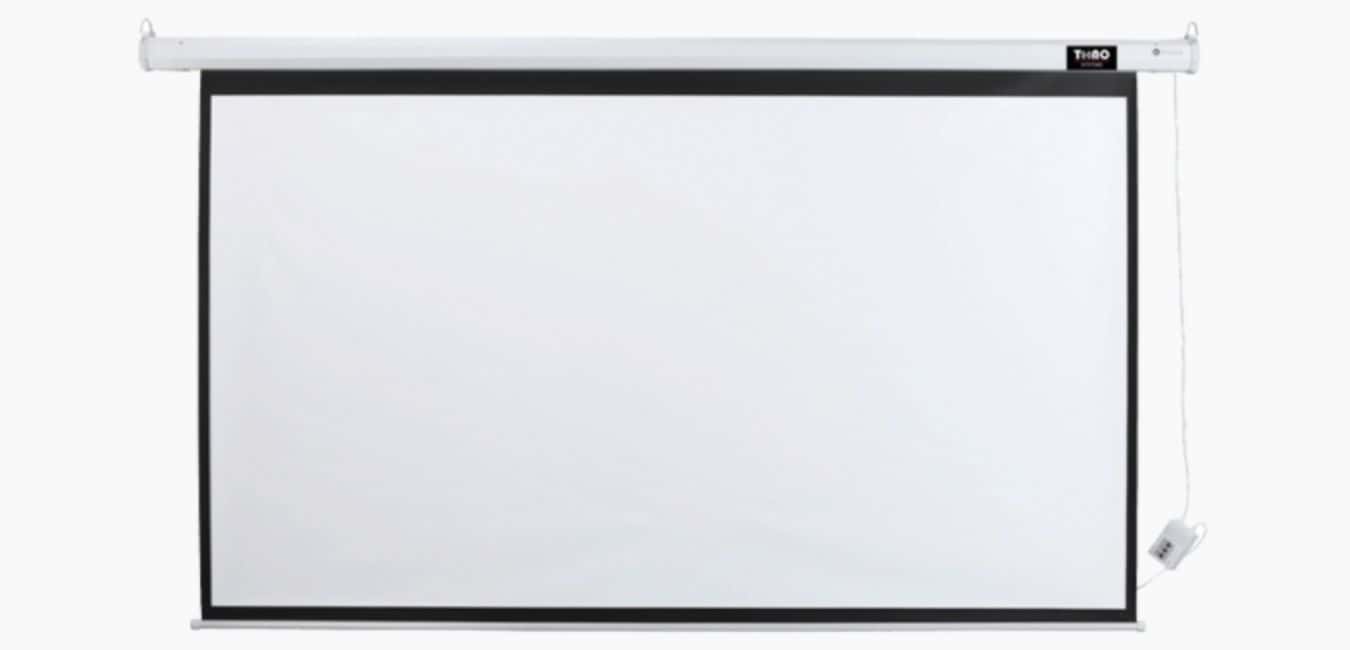

The lighting effect can put out of sight the flaws in a film or presentation. This is the same as the reflection of a regular monitor or HDTV.
In any case, the white color has a strong influence on the projected image contrast and gives us a true display and colorful images.
Grey Screen
Gray screens are often referred to as high-contrast screens as they increase the contrast on digital projectors in the viewing room which are not completely dark. The gray screen is good in absorbing ambient light that hits it better as compared to a white screen. So on the screen, this will keep the black level.
Black Screen
Soon after the invention of silver screens, the black projection screen came onto the market. Compared to a white screen, you don’t have to turn off the light as black color affects more on projecting black or contrasting images.
That is why it has more similarities to silver screens in visible contrasts. Just as chalk is much more visible on blackboards than on a whiteboard or light-colored paper compared to brightness on a dark screen.
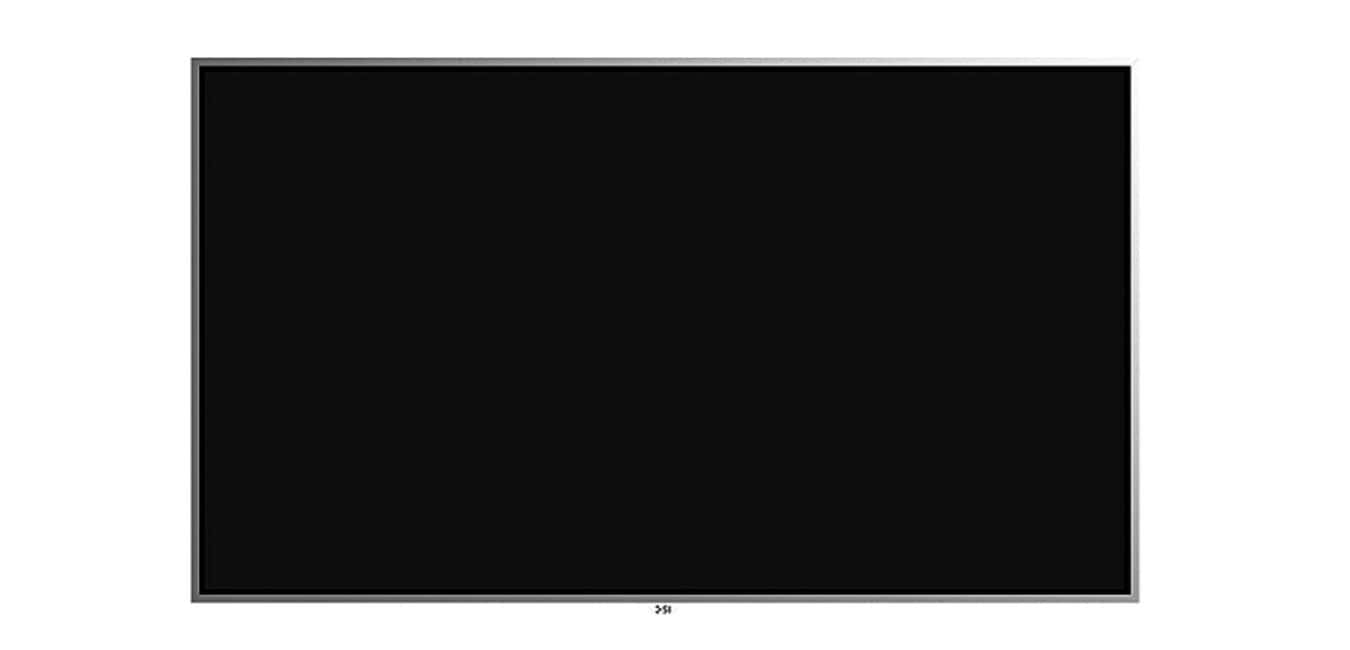

How to Select the Right Material for Outdoor Projector Screens?
All of these materials may sound great, but the fact of the matter is that you are not sure of what you require in your outdoor display material. So let’s take a look at some important factors to choose a good projector screen.
- The Type of Screen
There are different types of screens, and you should see what each one of the means is for determining which works best for you.
Stretchy screens are simple to regulate to a frame, and you may have fewer issues once it involves creases, as you’ll just stretch them out. If you wish to form them portable, you can just attach them to a covering line and so stretch them down and press them properly. You’ll additionally stretch them across a wall.
Sturdy screens work well when you want something that can be rolled up and down or simply pinned to a wall. They don’t work well with frames because you can’t easily reduce blemishes and wrinkles. But they’re pretty cool because of the picture quality they offer.
When you look at the type of display, you have to consider how you intend to use it. Some people want to put their screen on a sturdy frame, in which case the best way to do that would be with elastic. Some people want a roll-down screen that works better with sturdier materials.
- Color of the Screen
As we already mentioned above about the colors of the screen from which you can select. They’re usually gray and white and you have to choose. However, the color mainly depends on your condition.
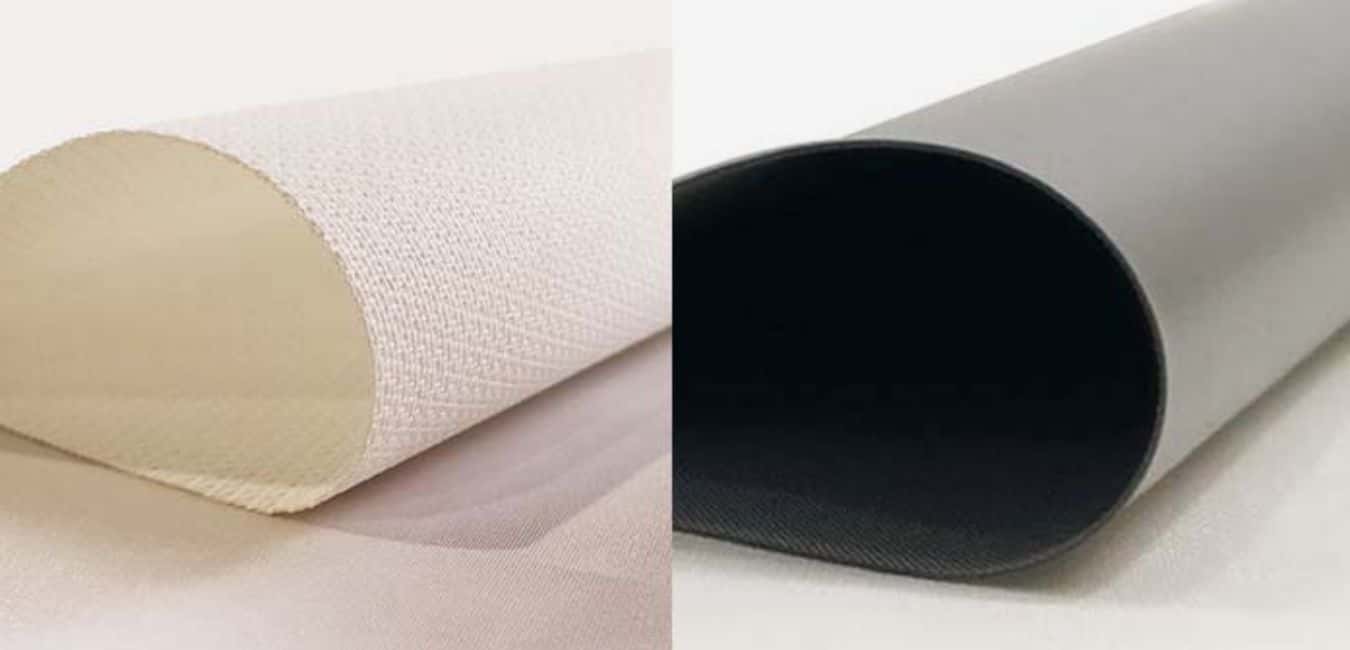

If you can afford to watch a movie in a dark room with controlled lighting, you will likely enjoy white more because it captures light very well and offers great contrast. However, if you cannot control the light around you and ambient light For example if you have twinkling lights or street lamps, you should opt for a gray shade.
- Screen Size
Before choosing a projector’s screen size, the first thing to consider is the ideal aspect ratio which is probably 16:9 for a good 1080p or 4k resolution home cinema projector.
In general, you have to adjust the screen size to suit your surroundings and audience. While you can go much larger as compared to traditional screens with projector screens, don’t overdo it because everyone will get overwhelmed.
Best Projector Screen Material – FAQs
Conclusion
Movie nights are highly dependent on on-screen quality, so your focus should be on selecting the type of screen that will work for you and give you the best movie-viewing experience. Your choice will likely depend on your budget and screen size and also what you want.
The safest choice is an inflatable screen as it is easy and quick to install, ideal for people who don’t want to go into the trouble of building something new in their garden or home improvement. Of course, if you want the best option, it’s a trapeze, but it comes at a higher price. Whatever you choose, make sure it properly reflects your needs.
